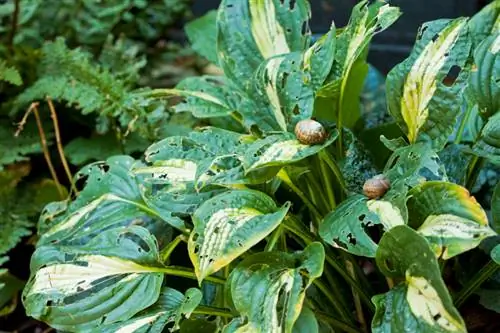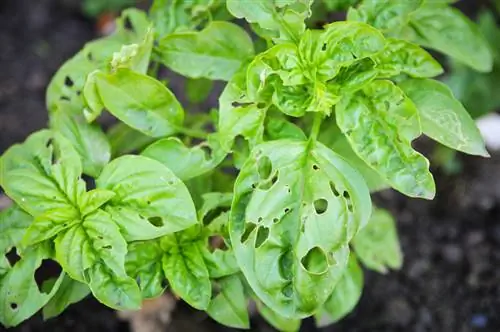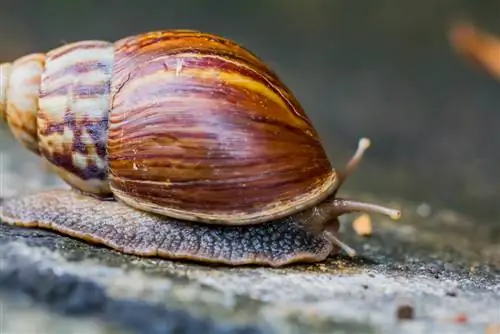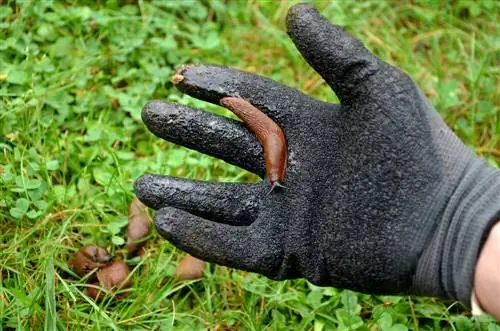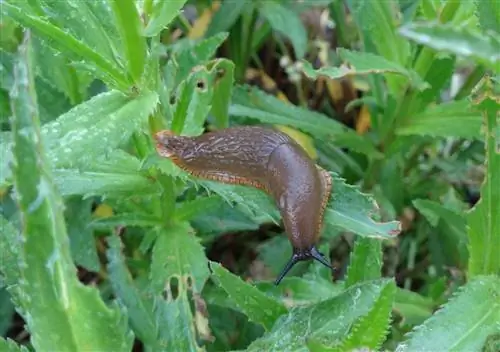- Author admin [email protected].
- Public 2023-12-16 16:46.
- Last modified 2025-01-23 11:20.
The hostas were freshly planted in autumn, now it is April and the leaves are sprouting. But what is that? The leaves are riddled with holes! There are most likely snails behind it
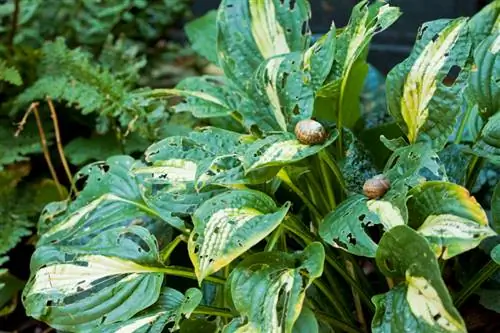
How do I protect hostas from snail infestation?
To protect hostas from snails, it is recommended to use resistant varieties such as 'Halcyon' or 'June'. Additional measures include regular checks, beer traps, snail fences, spreading slug pellets, sand or sawdust around the plant and collecting the snails in the evening.
Snails like to eat hostas
When the snails move around the garden in spring, they are attracted by the smell of the hostas. No other perennial makes your mouth water so much. Even the best care doesn't help. Hostas have an almost magical attraction to snails, especially when they sprout.
Obviously endangered hosta varieties
These pests eat holes in the leaves. If you are unlucky, the entire newly sprouting plant will be wiped away. In particular, those varieties that have delicate leaves, variegated leaves and/or fragrant flowers are at the top of the snail list.
Varieties that are unappetizing to snails
But there are also varieties that snails prefer to stay away from. The reason behind this is usually that they have strong and leathery foliage. This is unpopular with snails. They prefer delicate leaves.
Consequently, if you are often confronted with slug infestation on your hostas, you should count on such more resistant varieties. These include, among others, the following specimens:
- ‘Halcyon’
- ‘June’
- 'Halbard'
- ‘Sum and Substance’
- ‘Abby’
- ‘Ben Vernooij’
- ‘Abiqua Drinking Gourd’
- ‘Blue Angel’
- ‘Big Daddy’
What helps against snails?
There are many control strategies against snails. The following measures help with the hostas:
- carry out regular inspections
- Setting up beer traps
- Set up snail fences around the hostas
- Sprinkle slug pellets in spring
- Sprinkle sand and/or sawdust around the hostas
- Collect snails in the evening
- Watering better in the morning than in the evening
- Plant hostas in pots and place them on the balcony or roof terrace
Tip
If your hosta has already fallen victim to snails, take comfort in the fact that hostas are usually robust and can sprout again even after they have been eaten if the location and care are right.

